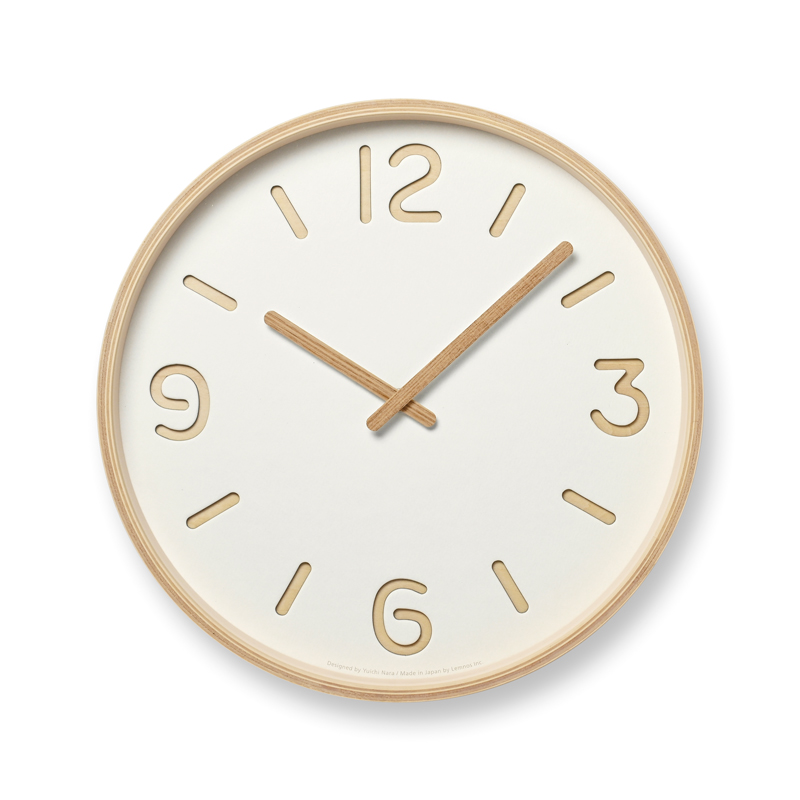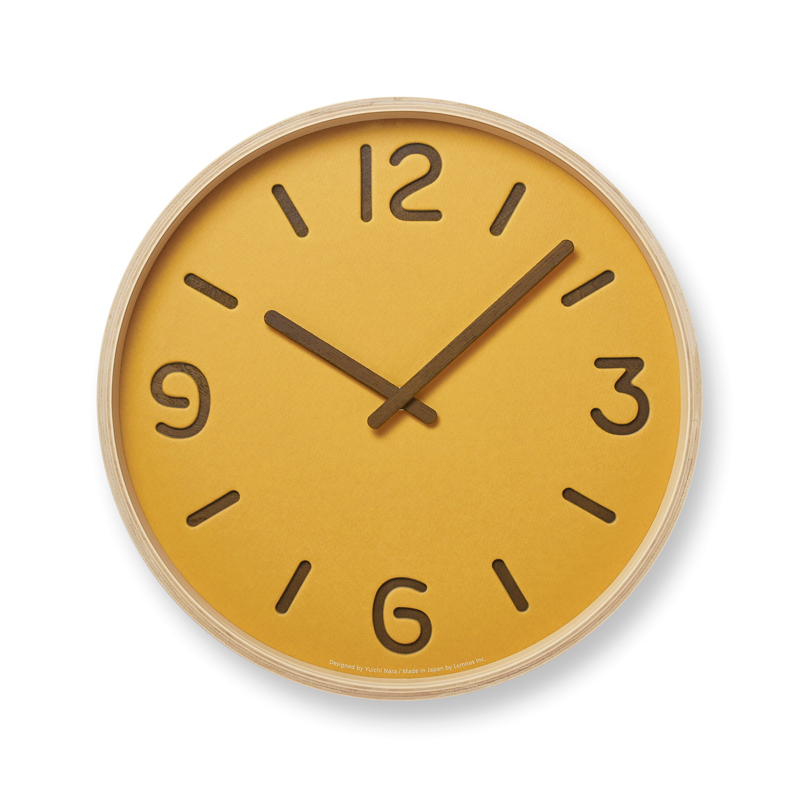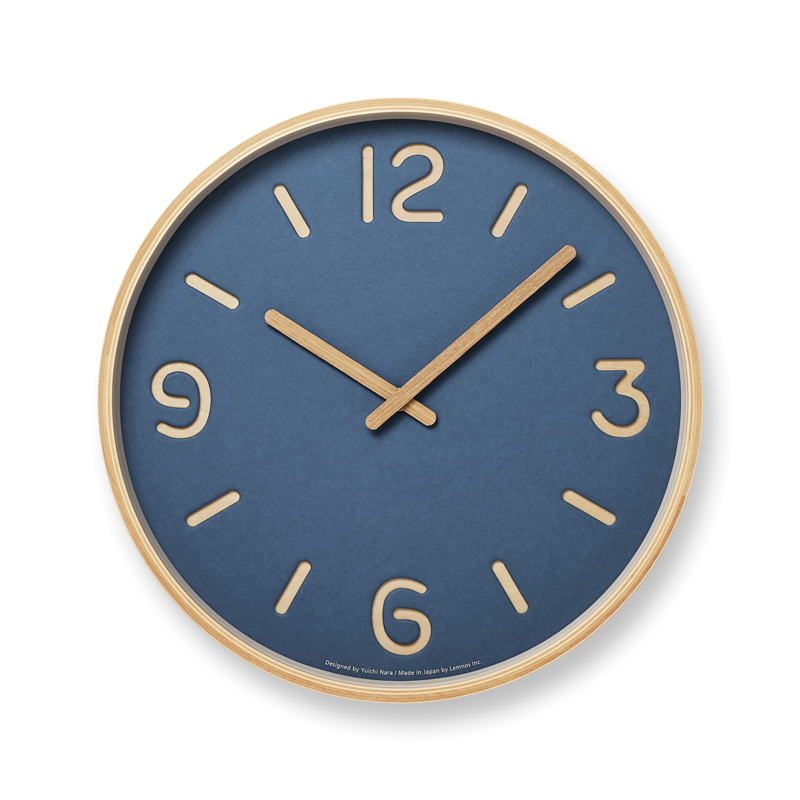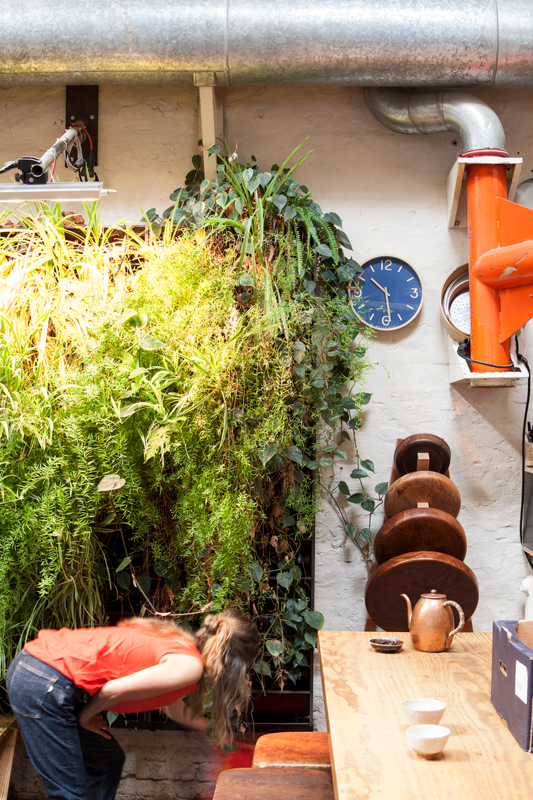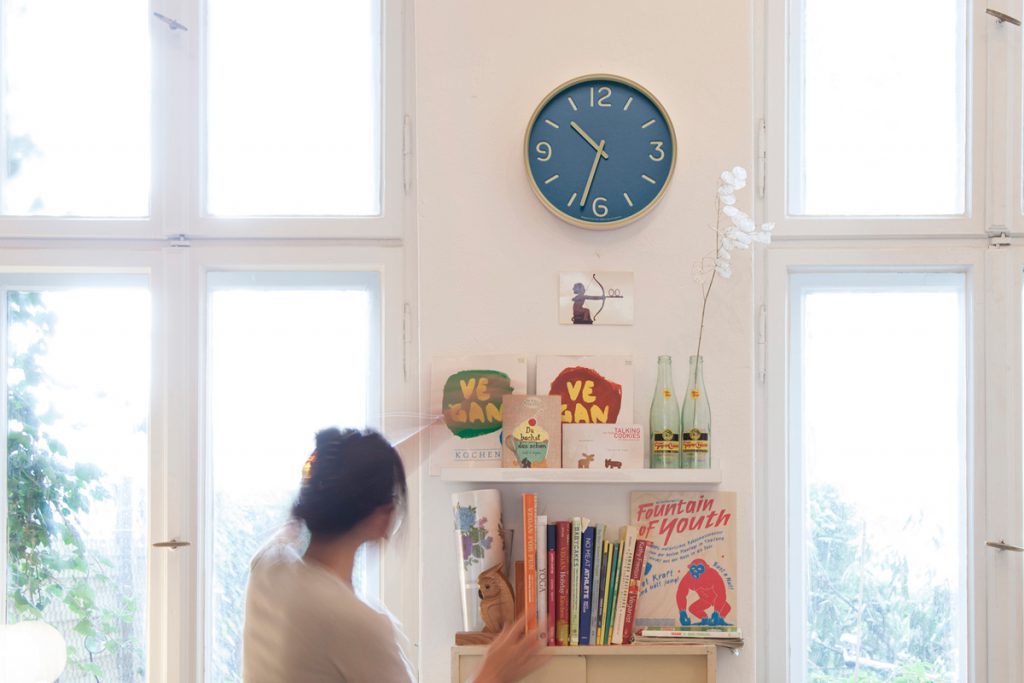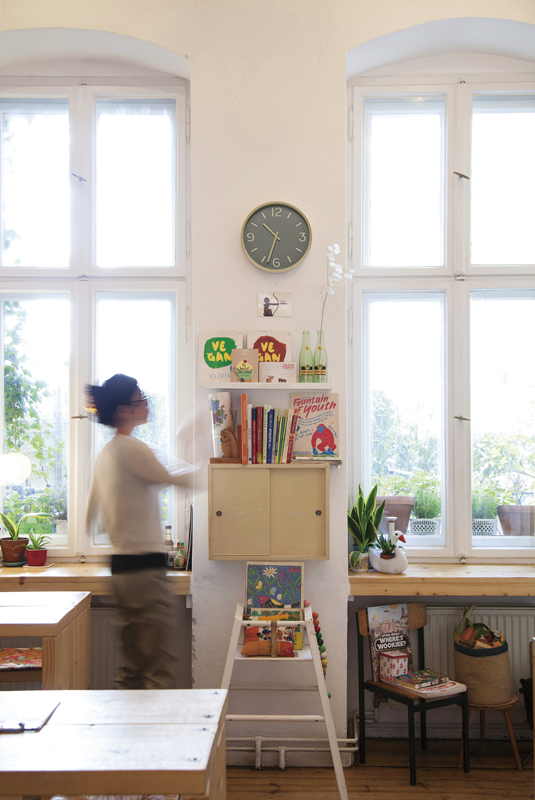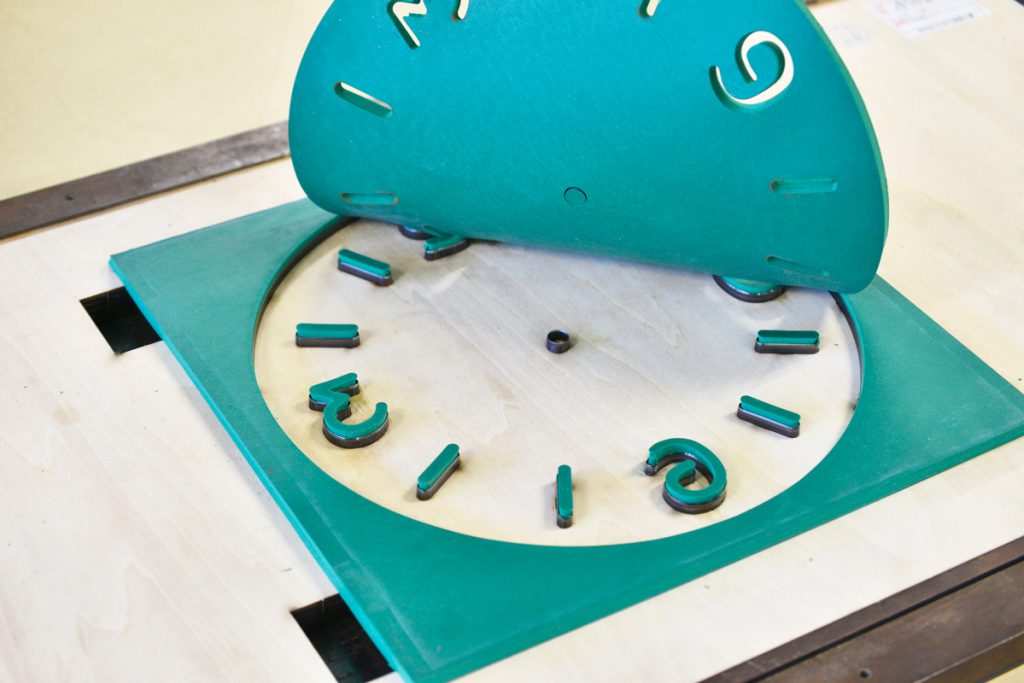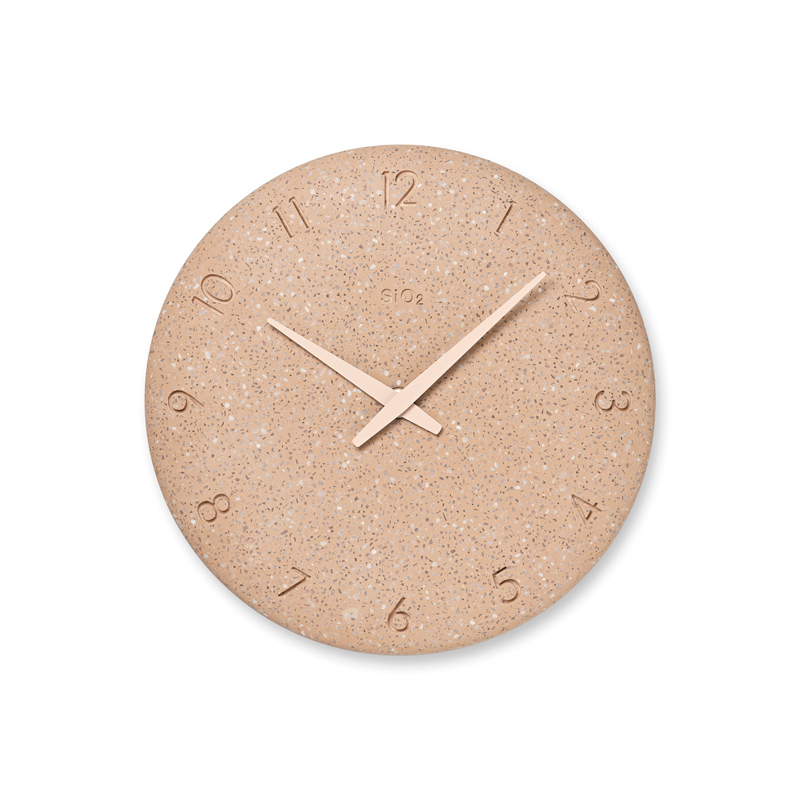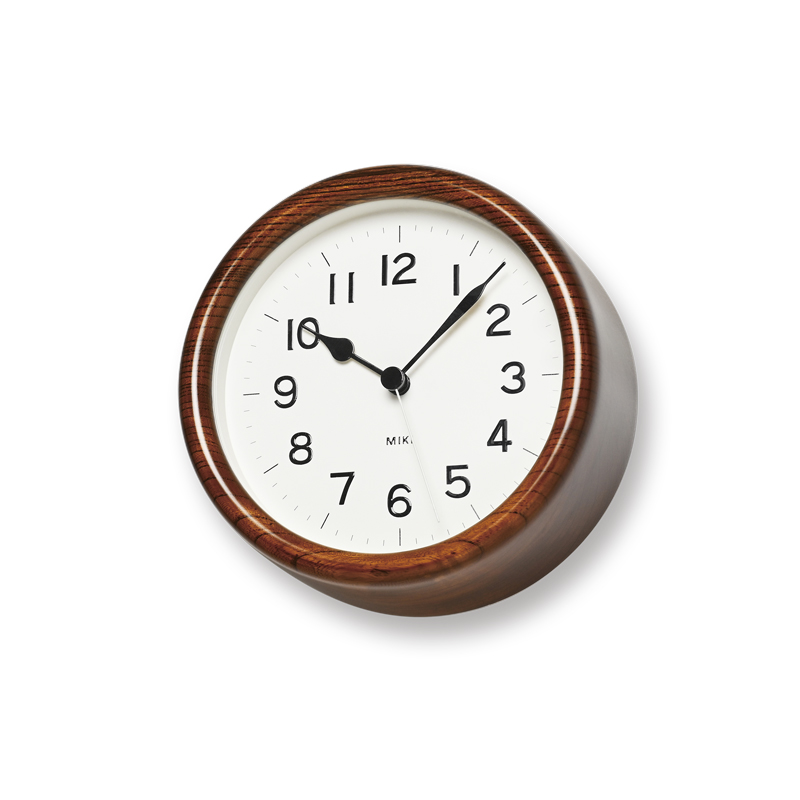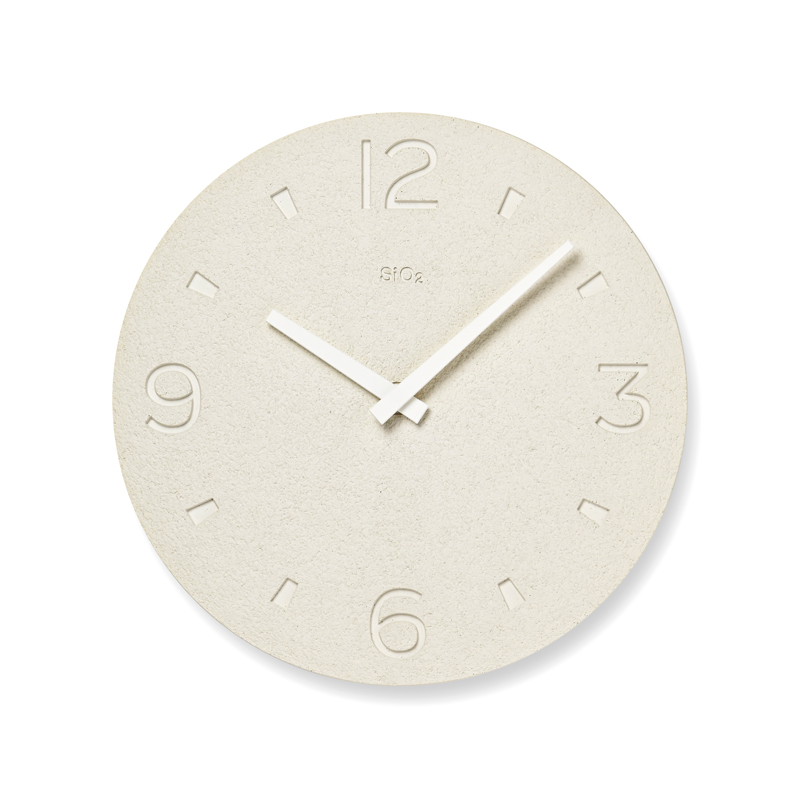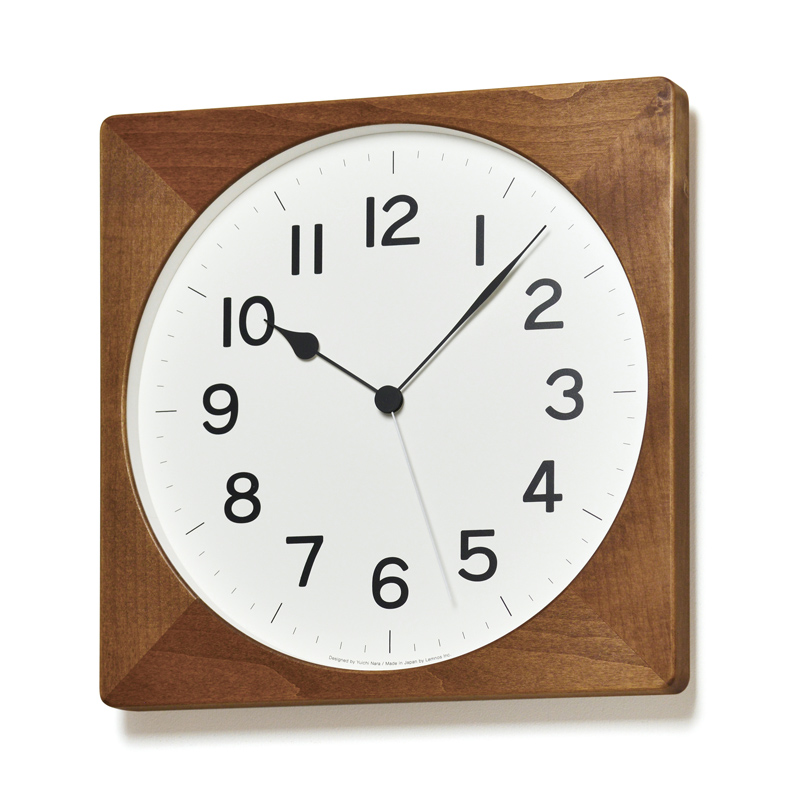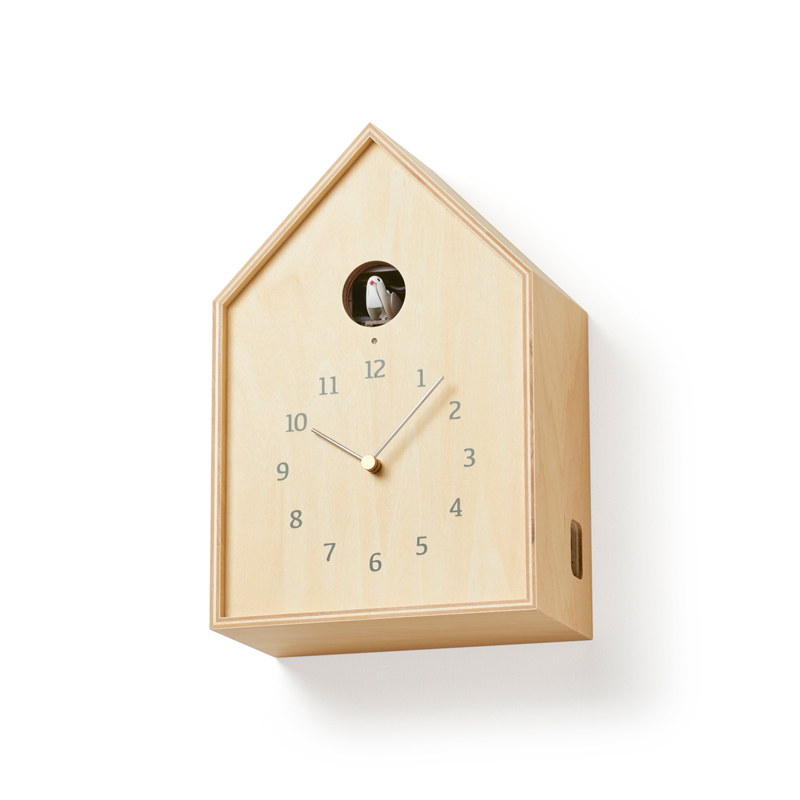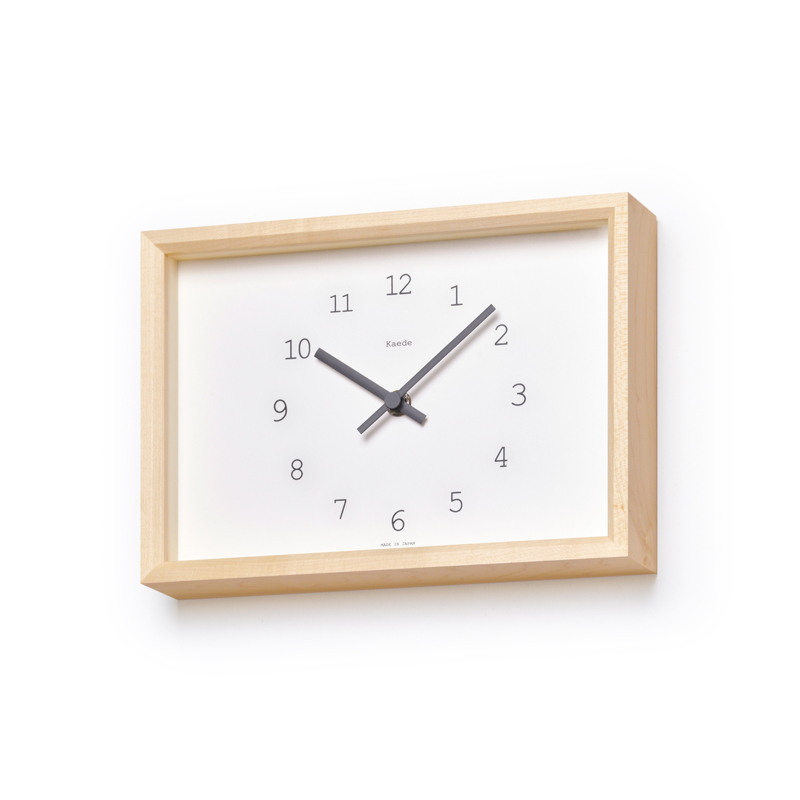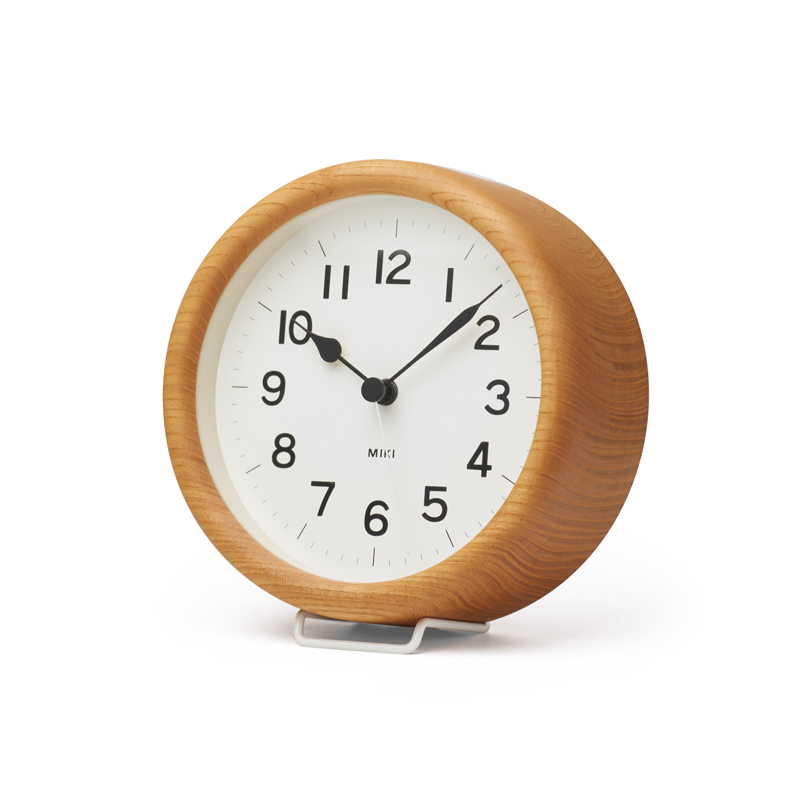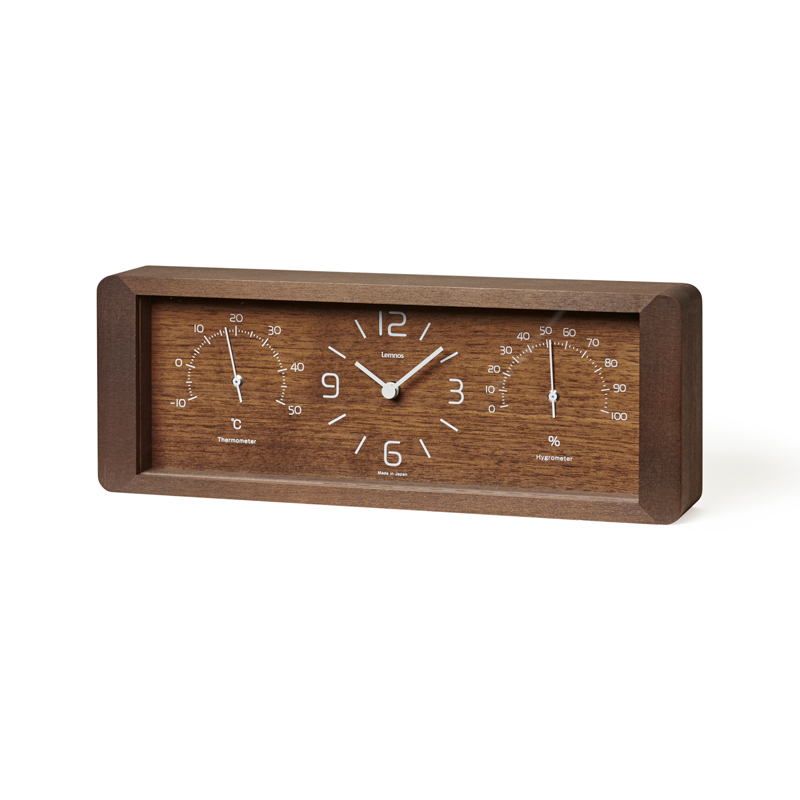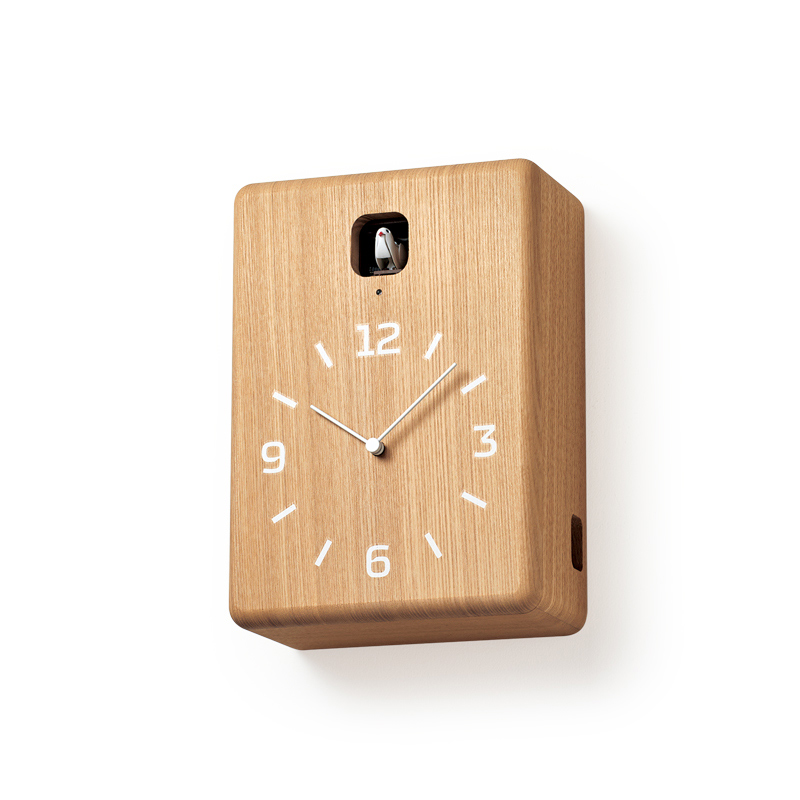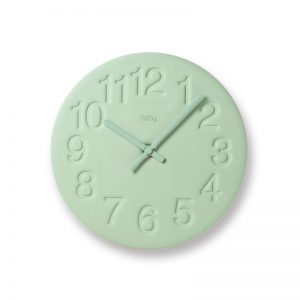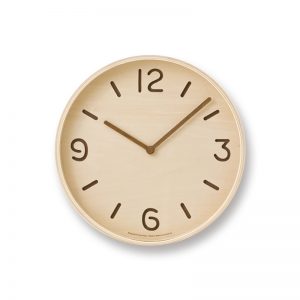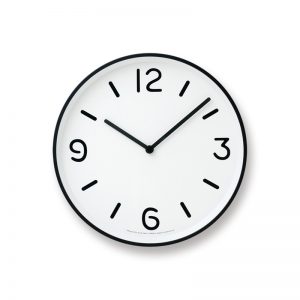THOMSON PAPER
design : Yuichi Nara
THOMSON PAPER is a wall clock which combines the fine texture of wood and paper. The clock face is made of paper called Mermaid. The unique texture of the paper is called “Mermaid ripples” named after the ripples of the sea, the home of the mermaid. The distinction in textures of its face (paper), frame (plywood) and hands (ash) underlines the contrast of natural materials used.
The face of Lemnos Thomson clocks is made with a special die-cutting machine which is also used for manufacturing puzzles. This die-cutting technique can make complicated shapes by stamping out from paper or wood using a mold out of thin steel blade fixed onto a wooden board.
The edges of the number outlines stamped out are naturally rounded like a tensed water surface and drop soft shadows into the spaces stamped out. The distinct textures of the materials and the cubic effect created by the three-dimensional numbers on the clock face improve the function as an object for telling time.
Five pastel tones are selected from the available collection of Mermaid as suitable colors for the plywood clock frame.
※ Mermaid® is a registered trademark of TAKEO Co., Ltd.
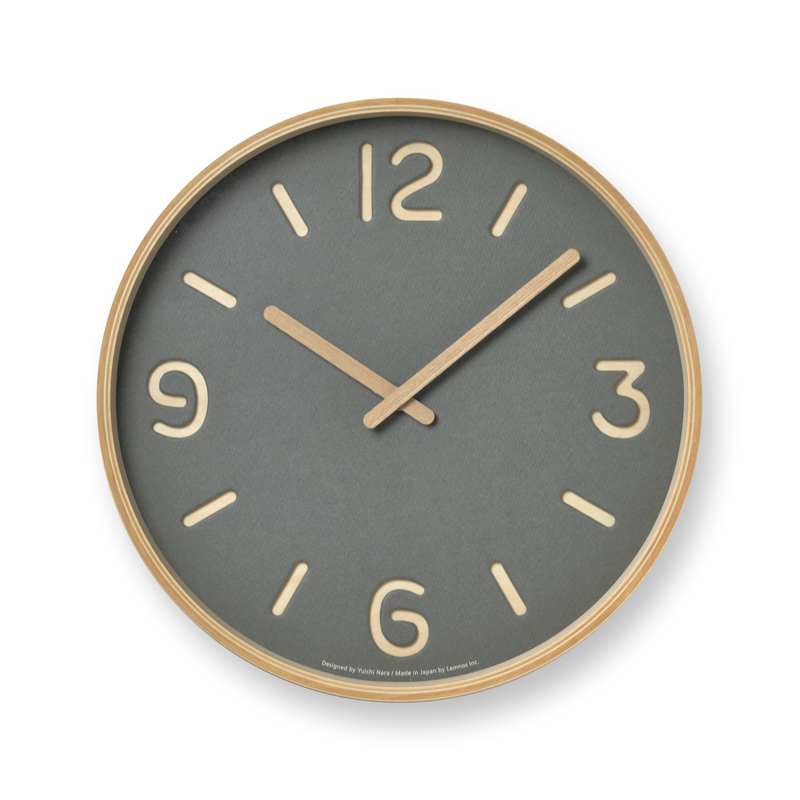
NY18-15
- Size
- φ305 × d52mm
- Weight
- 830g
- Material
- Plywood, paper ( Mermaid ) , glass
*About Mermaid
Color tones transferred to a paper surface by using special felt which has a woven design during the papermaking are called felt mark.
Mermaid, created in 1956 under the supervision of a designer named Hiroshi Hara (1903-1986), is a series of fine paper of felt mark made by a machine. The series was called “Mermaid ripples”- ripples of the sea that a mermaid lives in- because of the felt mark like gentle ripples and became familiar as “Mermaid” in 1960s.
Mermaid has various colors and thickness (ream weight) selected under the supervision of a graphic designer, Ikko Tanaka (1930-2002) in 1999. The series is widely used as a painting kit, a design paper and a book jacket.
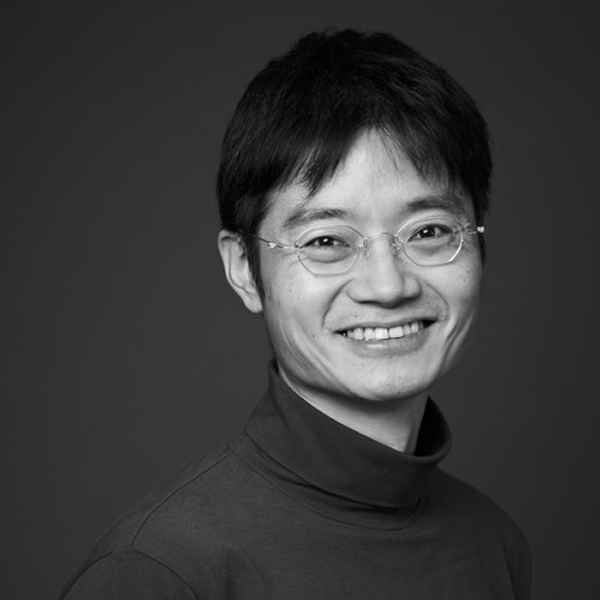
Yuichi Nara
Born in Tokyo, 1977. In 1999, he graduated from the Construction Department Architecture Course at Yokohama National University. Moved to Italy in 2000. Began designing following a period working at a glass studio and an architect’s office in Venice. In 2006, graduated from Venezia Construction University. During a trip to Noto, Japan, he was so impressed with the richness of the nature and lifestyle, he decided to return to Japan and moved to Notojima. In 2007, he established the Noto design office. Studying local materials and learning local techniques and applying them to his work, he attempts to design products that enrich everyday life. Alongside his design activities, he also grows rice in a rented untilled paddy field.
http://www.notodesign.jp/


